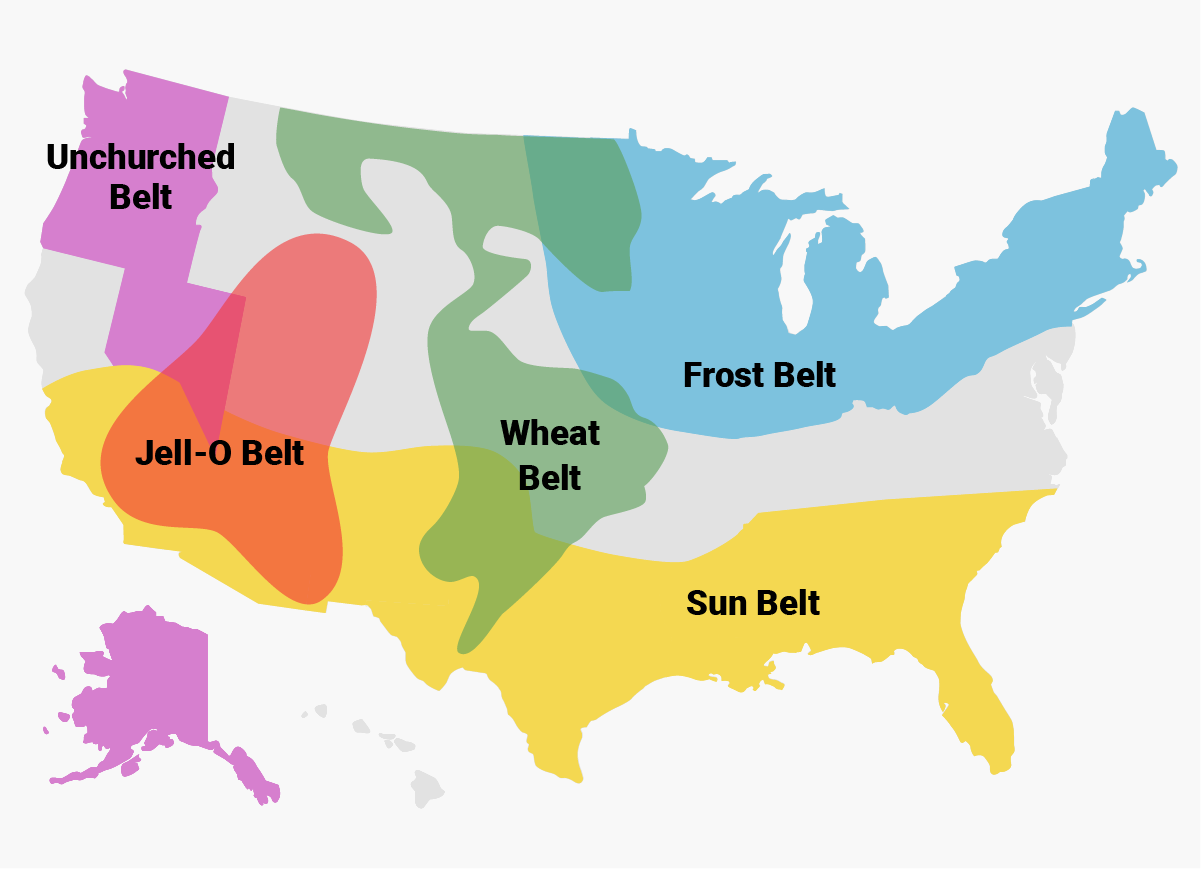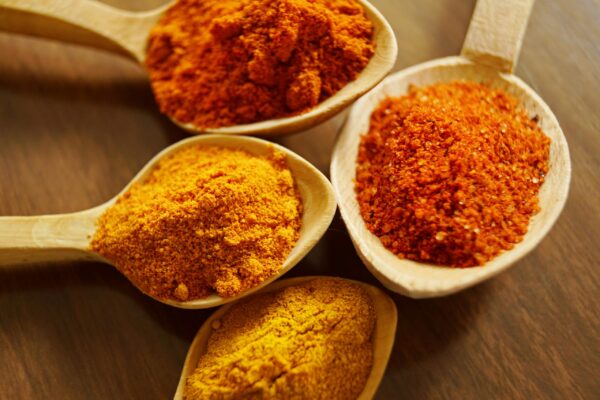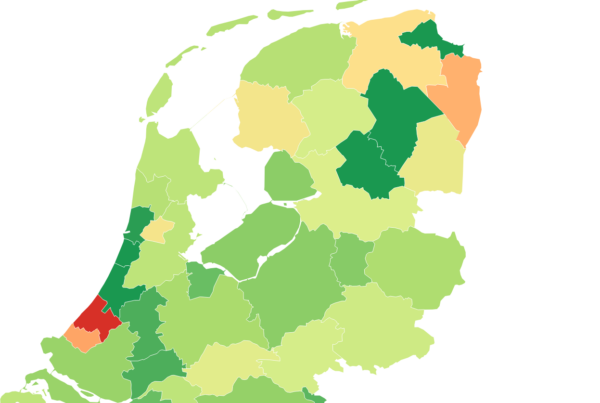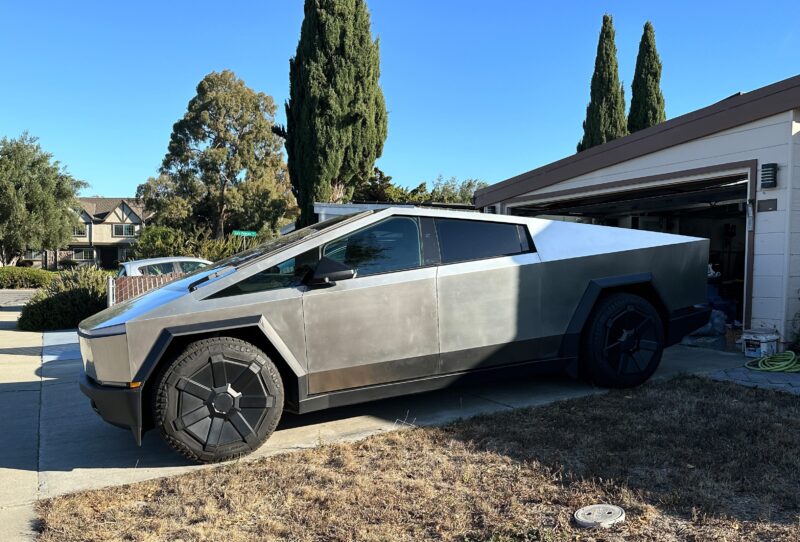- The United States is home to several “belts,” including the Rust Belt and the Bible Belt.
- They are some of the many regions that share distinct characteristics and make the US so diverse.
- Some lesser-known belts include the Jell-O Belt and the Stroke Belt.
The United States can be divided and subdivided into countless regions, each sharing a unique set of characteristics that set it apart from the country as a whole.
You’ve probably heard of the Rust Belt, the region in the Midwest and Northeast where once-booming economies are on the decline. You may also be familiar with the Bible Belt, a stretch in the South where religion plays an outsize role in the region’s culture and politics.
But what about the Jell-O Belt? Or the Stroke Belt? As it turns out, there are more than a dozen regions in the US that go by a “belt” moniker.
Here are the most prominent “belt” regions in the United States:
The Bible Belt
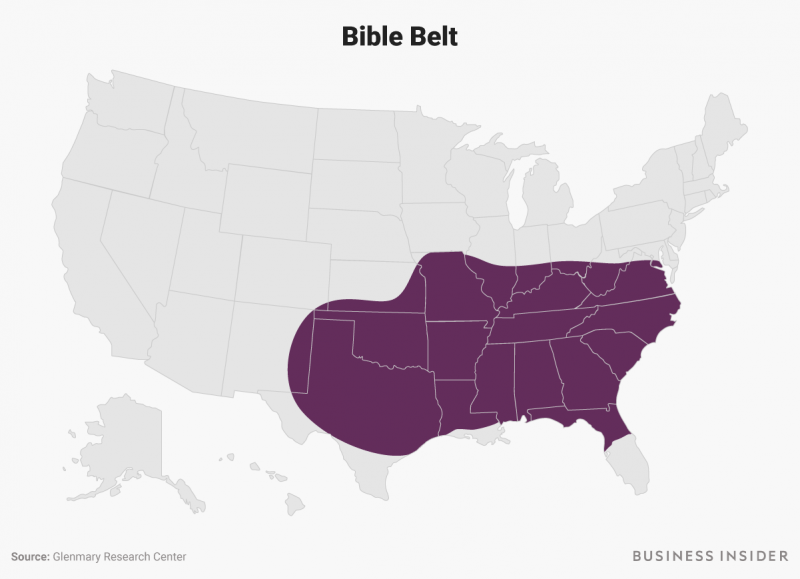
The Bible Belt is an area of the US where evangelical Protestantism plays an especially strong role in society and politics. People in the Bible Belt tend to be socially conservative and have higher church attendance rates than people in other parts of the country.
The Bible Belt is thought to include almost all of the Southeastern US, and runs from Virginia down to northern Florida and west to parts of Texas, Oklahoma, and Missouri.
The Black Belt
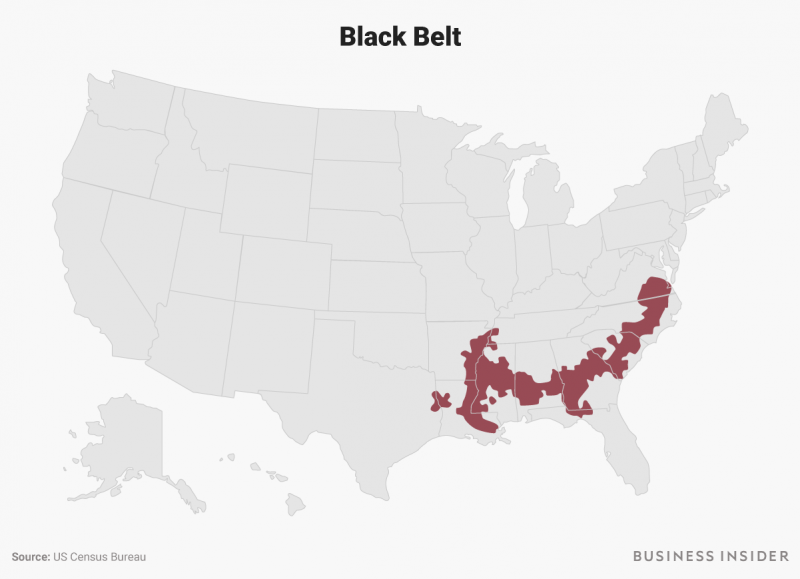
The Black Belt is a region of the Southern US with a history of slave plantation agriculture and a high African-American population.
The term originally referred to a specific stretch in central Alabama known for its dark, fertile soil. That stretch eventually became associated with the slaves who tended to the land, and the term expanded to include the greater region where slavery and cotton farming was widespread.
Here's how Booker T. Washington described the evolution of the Black Belt:
So far as I can learn, the term was first used to designate a part of the country which was distinguished by the colour of the soil. The part of the country possessing this thick, dark, and naturally rich soil was, of course, the part of the South where the slaves were most profitable, and consequently they were taken there in the largest numbers. Later, and especially since the war, the term seems to be used wholly in a political sense - that is, to designate the counties where the black people outnumber the white.
Today, the term Black Belt generally encompasses a stretch of counties from Virginia down through the Deep South and including parts of Texas and Arkansas.
Corn Belt
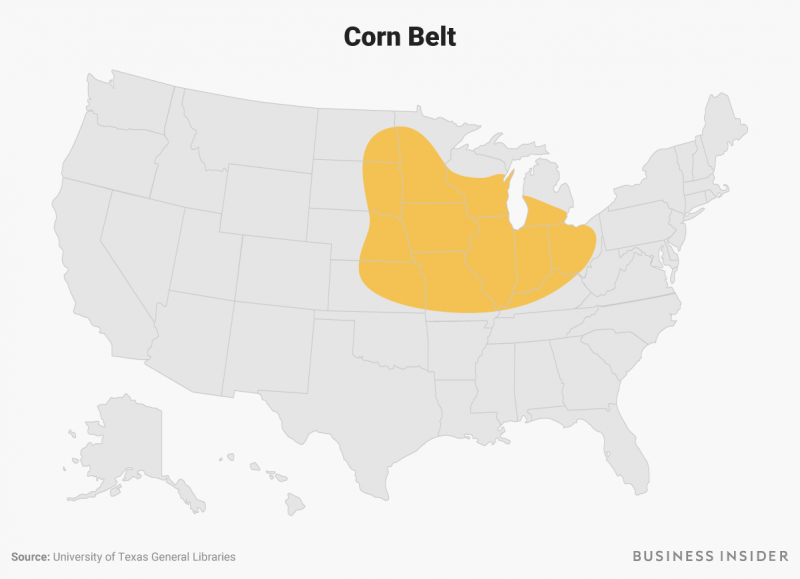
The Corn Belt is a region of the Midwest that produces a disproportionate amount of the nation's corn.
The region stretches from Ohio to parts of Kansas, Nebraska, and the Dakotas, and encompasses parts of Minnesota in the north and Missouri and Kentucky in the south. Iowa and Illinois could be considered the heart of the Corn Belt, as the pair accounts for a third of all the corn in the US.
Cotton Belt
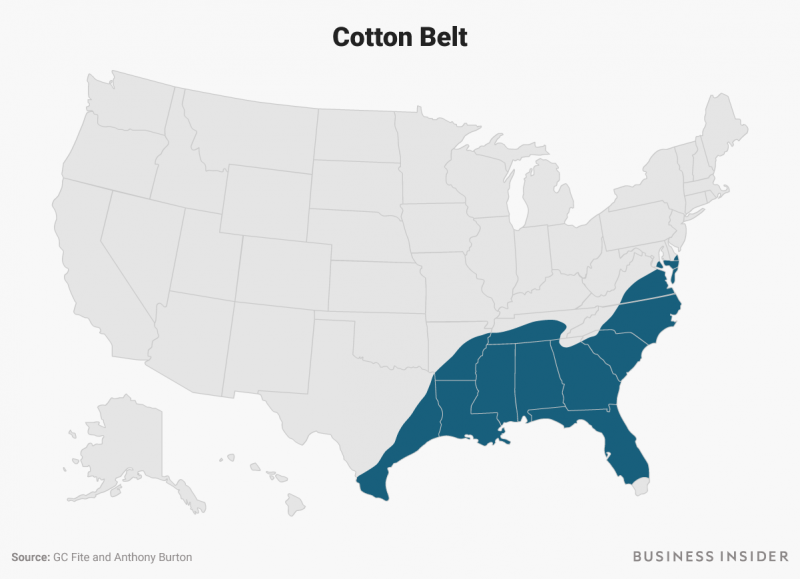
Like the Black Belt, the Cotton Belt is rooted in slavery - it encompasses the states where cotton was the predominant cash crop from the late 1700s into the 20th century.
The region includes much of the Southeast, and reaches as far north as Maryland and as far west as Texas.
Frost Belt
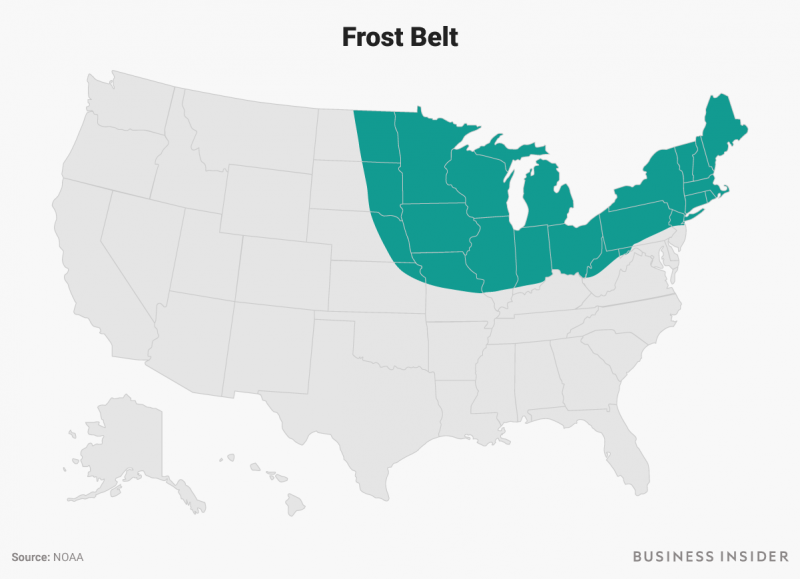
As the name suggests, the Frost Belt is a region known for its icy winters and heavy snowfall. It includes the entirety of New England and much of the Mid-Atlantic and Midwest regions.
It's no surprise that the Frost Belt overlaps with the region known as the Salt Belt, which are the cold-weather states where heavy doses of salt are applied to the roads in the winter. A state's Salt Belt status is relevant to car owners and manufacturers, as road salt can cause corrosion in automobile parts.
Jell-O Belt
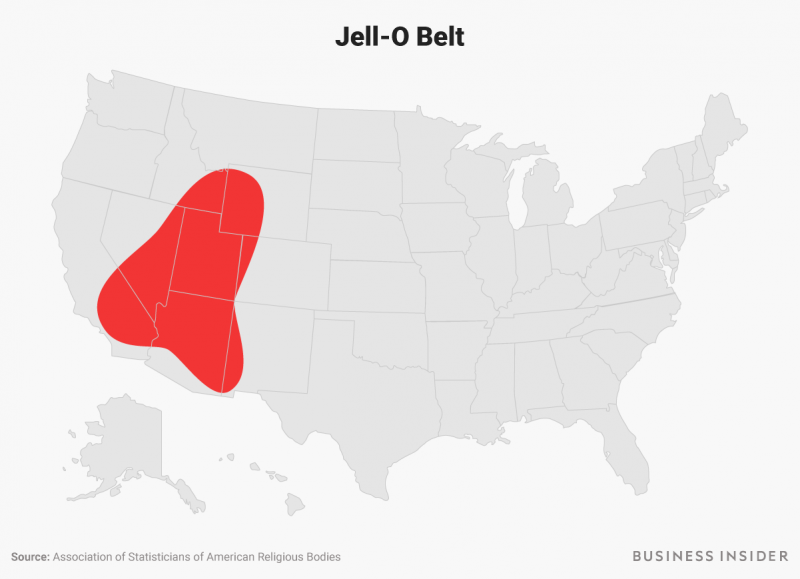
The Jell-O Belt is the affectionate nickname for the so-called Mormon Corridor, the area of the western US settled by Mormons in the second half of the 19th century. It encompasses Utah and parts of the surrounding states.
Why Jell-O? Apparently, Mormons can't get enough of the stuff. "Salt Lake City is America's Jell-O-eating capital," and its residents buy twice as much as the average American, The Los Angeles Times wrote in 2002.
"Locals attribute their high Jell-O consumption to the large population of teetotaling Mormons and their compensating love of sweets," The Times wrote.
Rice Belt
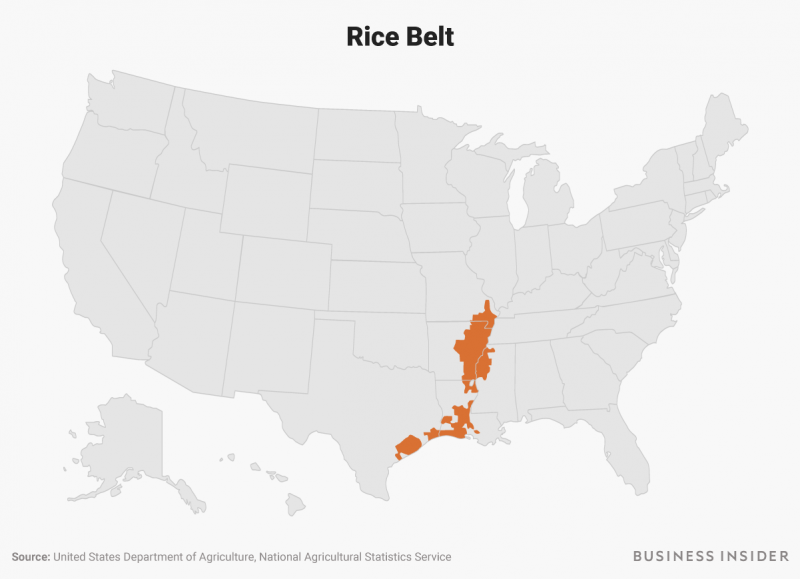
The Rice Belt is a stretch of counties that produces almost all of the rice in the US.
As the nation's leader in rice production, Arkansas is the hub of the Rice Belt. The region also includes parts of Texas, Louisiana, Mississippi, and Missouri.
Rust Belt
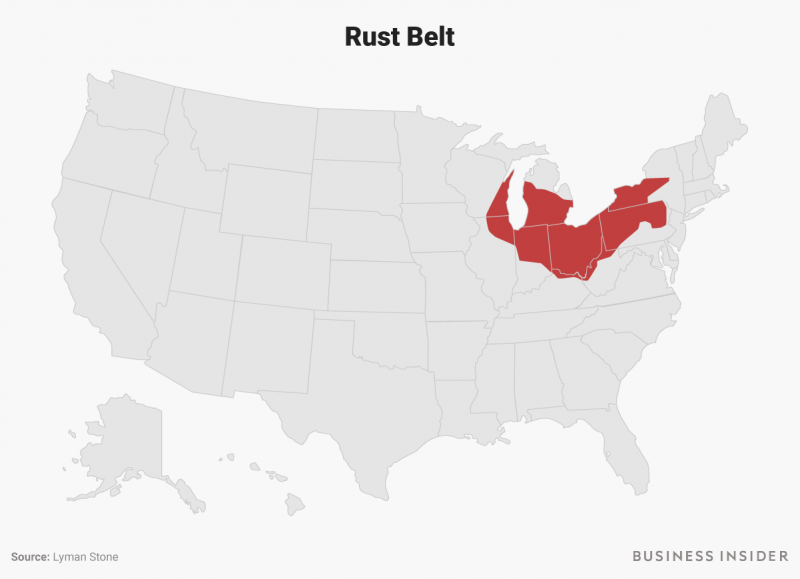
The Rust Belt is a region running across parts of the Midwest and Northeast. Once known for thriving iron and steel industries, the Rust Belt gets its name from the abandoned factories and urban decay that have marked the region since the 1970s.
The region is usually said to include parts of New York, Pennsylvania, Ohio, Michigan, Indiana, Illinois, and Wisconsin. The area includes several political swing states, and residents of Rust Belt states often play critical roles in presidential elections.
Snow Belt
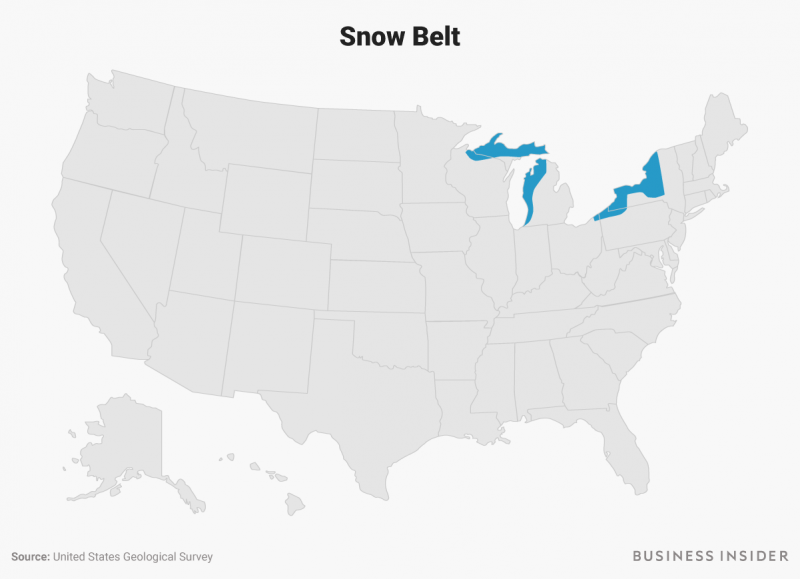
The Snow Belt comprises three stretches of land near the Great Lakes that are among the snowiest in the US.
The region attributes its heavy snowfall to a phenomenon called lake-effect snow. That's when cold, dry air passes over the relatively warmer water of a lake, picking up moisture and dumping it downwind.
Each of the five Great Lakes yields a snow belt: Lake Ontario's is in upstate New York; Lake Erie's runs from Cleveland, Ohio, to New York; Lake Michigan's runs the entirety of western Michigan, and Lake Superior's includes northern Wisconsin and Michigan's Upper Peninsula.
The same effects that produce lake-effect snow are also favorable to growing fruit, so these very regions also make up America's so-called Fruit Belt.
Stroke Belt
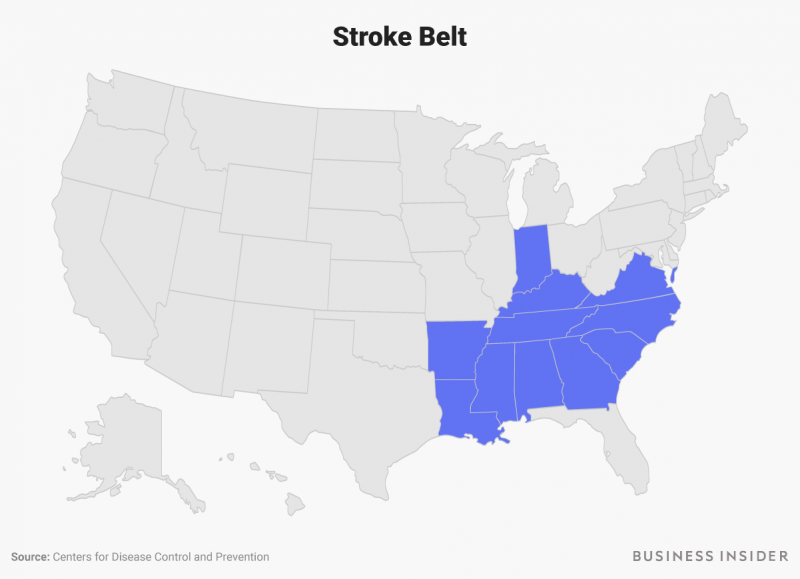
The Stroke Belt is a group of 11 states where the risk of having a stroke or other types of cardiovascular disease is significantly higher than the national average.
The states in the Stroke Belt, mostly in the Southeast, are Virginia, North Carolina, South Carolina, Georgia, Alabama, Mississippi, Louisiana, Arkansas, Tennessee, Kentucky, and Indiana.
According to the Heart Attack and Stroke Prevention Center, researchers suspect that high rates of obesity, smoking, and high blood pressure contribute to the preponderance of strokes and cardiovascular disease in the region.
Sun Belt
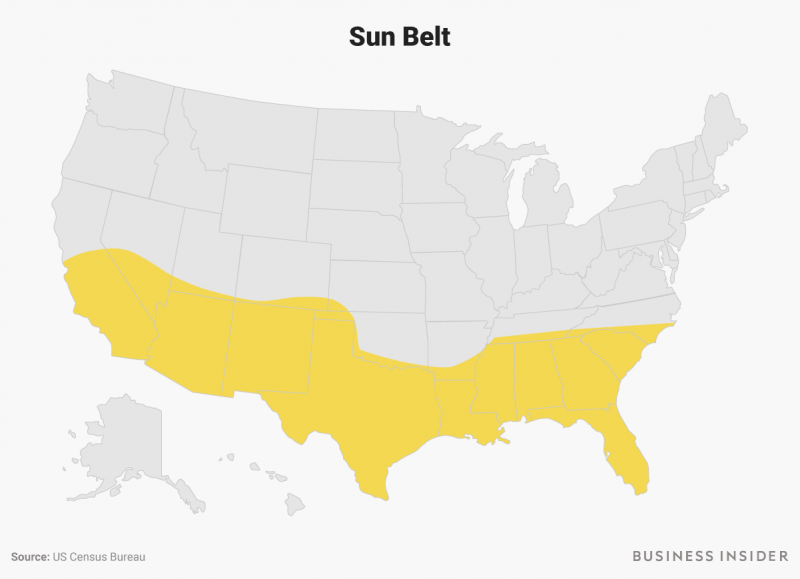
The Sun Belt stretches across the entire southern portion of the continental US and is known for its warm weather and sunny skies. The northern border of the region roughly aligns with the 36th parallel.
Since the end of World War II, the Sun Belt has seen a boom in its population and economic opportunities, and Census data show the region is growing at a faster rate than the Northeast and Midwest.
Unchurched Belt
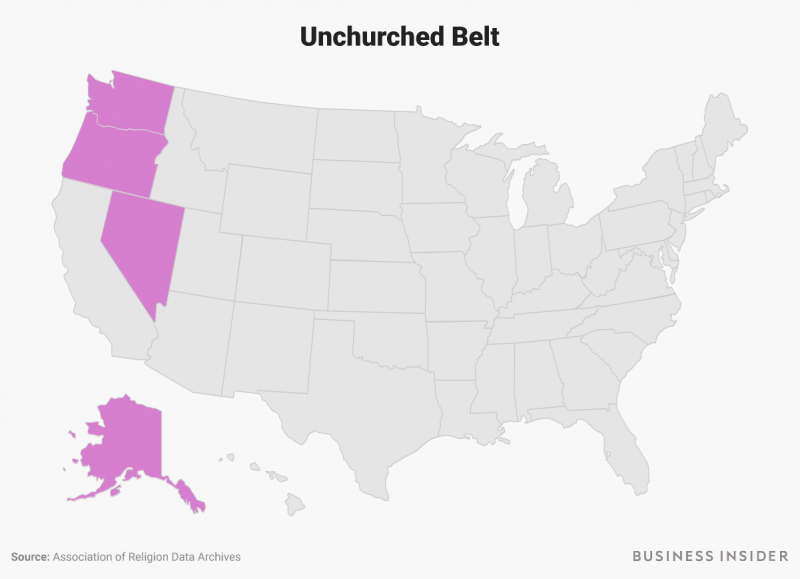
The Unchurched Belt is sort of like the opposite of the Bible Belt. Located in the northwestern corner of the country, it's the region with the lowest rates of religious participation and church attendance in the nation.
The four states in the Unchurched Belt are Nevada, Oregon, Washington, and Alaska.
Wheat Belt
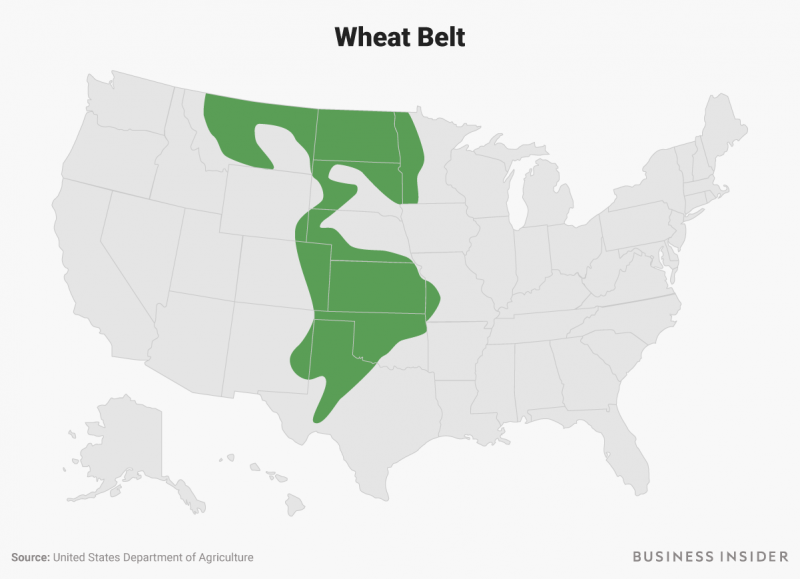
The last of the major belt regions is the Wheat Belt - the part of the Great Plains where wheat is the primary crop.
Really, the region is made up of two different wheat-growing areas. The southern portion, including parts of Texas, Oklahoma, Kansas, Nebraska, Colorado, and Wyoming, grows hard red winter wheat. The northern portion, covering South Dakota, North Dakota, Minnesota, Montana, and up into Canada, grows hard red spring wheat.
